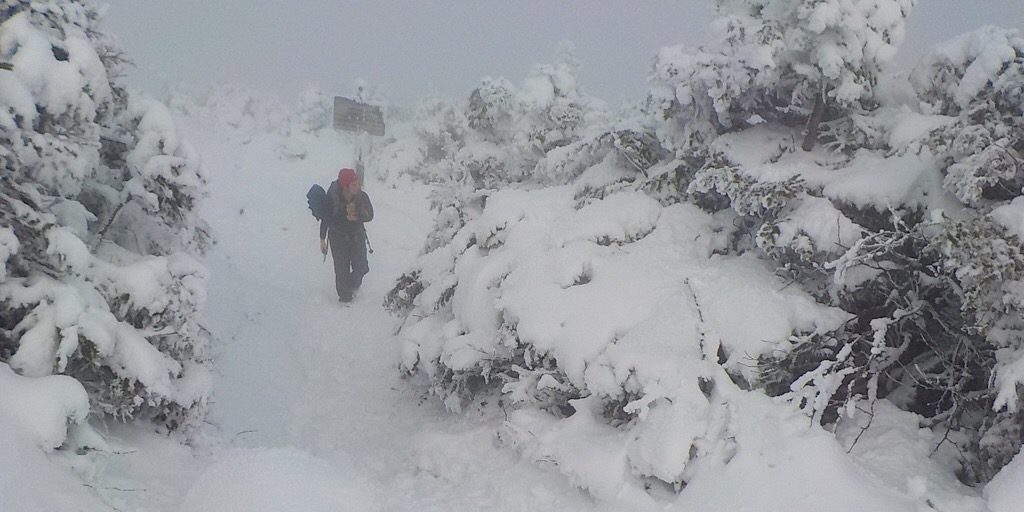
The weatherman was wrong.
 If you hike in the winter, you already know what it’s like, right? You start off cold… whoa, wait, back up. You actually start off warm, in bed, forcing yourself awake at the bequest of an annoying alarm. It’s time to get cold. You go through your morning routine warming up as you do then head outside into the dark, Arctic air to freeze again. You beat ice off of your frozen car with a brush scraper clearing an eye hole on the windshield large enough to drive with. Then, after (an amount of time you fill in here) you arrive at the trailhead.
If you hike in the winter, you already know what it’s like, right? You start off cold… whoa, wait, back up. You actually start off warm, in bed, forcing yourself awake at the bequest of an annoying alarm. It’s time to get cold. You go through your morning routine warming up as you do then head outside into the dark, Arctic air to freeze again. You beat ice off of your frozen car with a brush scraper clearing an eye hole on the windshield large enough to drive with. Then, after (an amount of time you fill in here) you arrive at the trailhead.
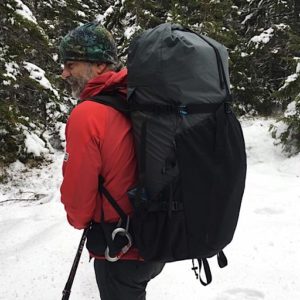
Want fast? Try fast and heavy.
Eventually you get moving and the warming process begins again, but this time it’s internal generation that makes you feel good. It’s not from a heated seat or fan. It’s good old exercise coupled with thoughtful layering. Soon some members of your team feel uncomfortable and need to de-layer. This is true of anyone who was comfortable standing around at the trailhead. You might think to yourself, let’s make this quick so we can all finally be on the same page. Finally everyone warms up and before long we’ll often start making jokes about how the weatherman was so wrong. The forecast, was in all actuality, probably right on, but we feel so darn comfortable we swear it’s fifty or sixty out, not eighteen degrees at all. Hikers laugh at this stuff.
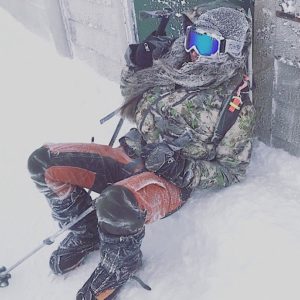
Not frozen. Just resting. Photo by Ryan Mcguire.
“Go” is the keyword. When we get cold we go. Now it’s time to get serious. Consider this: what if we are forced to stop and cannot go? What happens then? How long will we have? Everything freezes in the mountains eventually. We know we can stop for five minutes. Maybe even fifteen minutes or more on those rare days whilst basking in the warmth of the sun. But how about an hour? Be honest. Are you good for two hours, or four, or how about overnight? Can you survive overnight?! Do you carry a “twenty-four-hour pack” or even think of such things? If you plan for only the day of your hike and not beyond, you might be setting yourself up for a fall. Again, be honest, be brutally honest, how long will you last? Are you counting on rescue? It doesn’t matter if you have a Hike Safe Card (we recommend it, but it doesn’t make you safe), rescue can take hours!
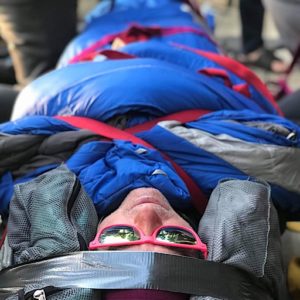
Choosing motion? Photo by Katie Vaughan.
Hiking in the winter can be dangerous if precautions aren’t taken. Even if precautions are taken, there are no guarantees. You improve your chances by sticking to well-known trails, hiking them during well-traveled times, leaving a detailed itinerary with a trusted someone, and carrying suitable layers so you aren’t relying on others to bail you out should you run afoul. And by suitable layers we mean layers enough to allow you to actually stop. And, since the most insidious way to go we cannot detect on our own, hike with others. Getting too cold can kill you and you will die long before you freeze. Nobody freezes to death.
Be honest, be independent, and be ready. It’s your life out there, at the very least.
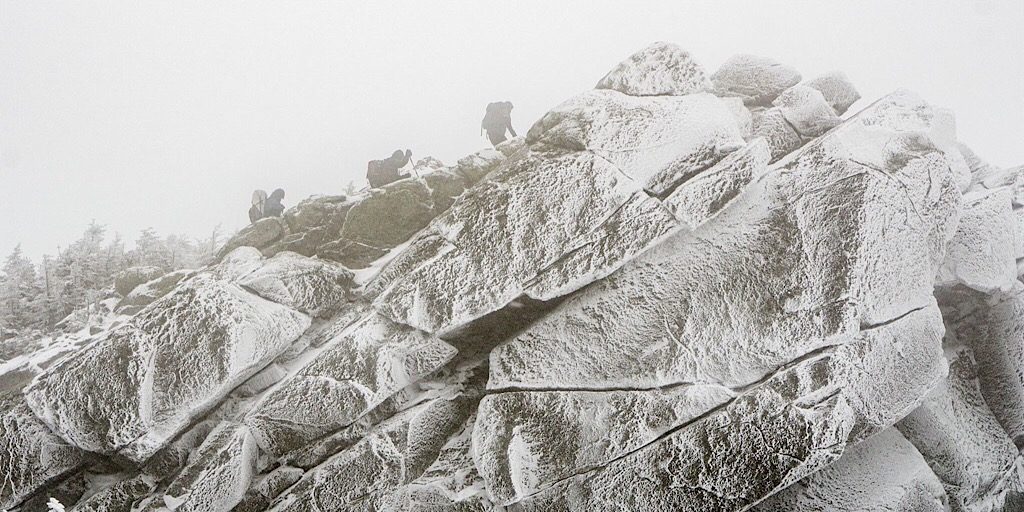
In the mountains everything freezes. Motion delays this inevitability. Photo by Jared Heath.
